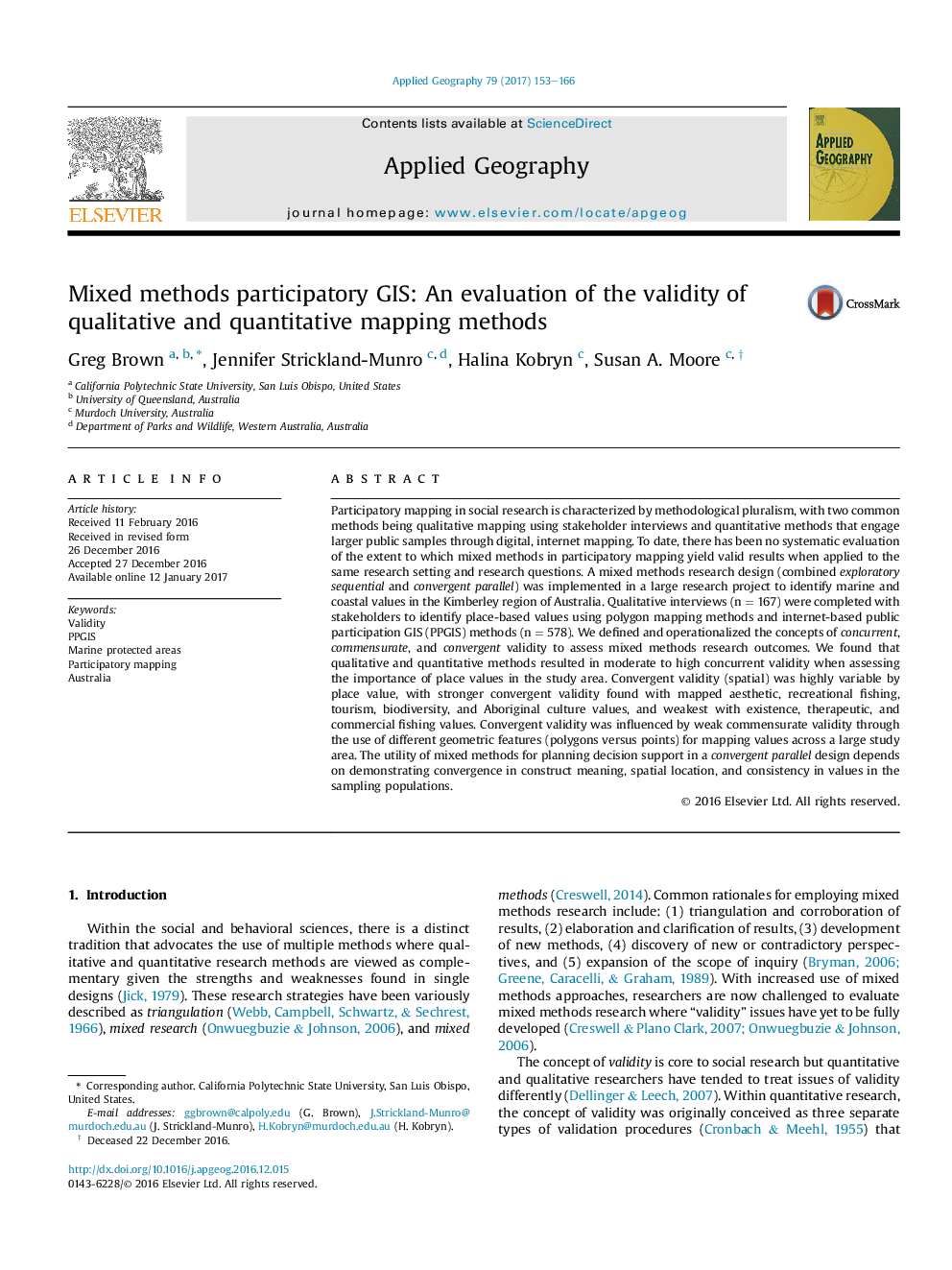| کد مقاله | کد نشریه | سال انتشار | مقاله انگلیسی | نسخه تمام متن |
|---|---|---|---|---|
| 6458436 | 1421038 | 2017 | 14 صفحه PDF | دانلود رایگان |

- Identifies and describes validity issues for mixed methods research using participatory GIS.
- Defines and operationalizes validity concepts for mixed methods research.
- Applies mixed methods validity concepts to a participatory GIS study in Australia.
- Discusses implications for use of mixed methods in participatory GIS research.
Participatory mapping in social research is characterized by methodological pluralism, with two common methods being qualitative mapping using stakeholder interviews and quantitative methods that engage larger public samples through digital, internet mapping. To date, there has been no systematic evaluation of the extent to which mixed methods in participatory mapping yield valid results when applied to the same research setting and research questions. A mixed methods research design (combined exploratory sequential and convergent parallel) was implemented in a large research project to identify marine and coastal values in the Kimberley region of Australia. Qualitative interviews (n = 167) were completed with stakeholders to identify place-based values using polygon mapping methods and internet-based public participation GIS (PPGIS) methods (n = 578). We defined and operationalized the concepts of concurrent, commensurate, and convergent validity to assess mixed methods research outcomes. We found that qualitative and quantitative methods resulted in moderate to high concurrent validity when assessing the importance of place values in the study area. Convergent validity (spatial) was highly variable by place value, with stronger convergent validity found with mapped aesthetic, recreational fishing, tourism, biodiversity, and Aboriginal culture values, and weakest with existence, therapeutic, and commercial fishing values. Convergent validity was influenced by weak commensurate validity through the use of different geometric features (polygons versus points) for mapping values across a large study area. The utility of mixed methods for planning decision support in a convergent parallel design depends on demonstrating convergence in construct meaning, spatial location, and consistency in values in the sampling populations.
Journal: Applied Geography - Volume 79, February 2017, Pages 153-166